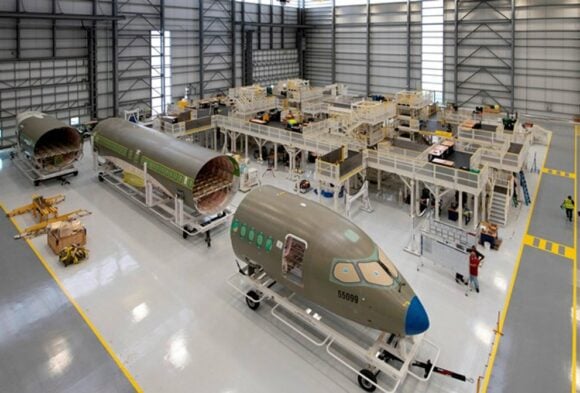
9a9d878d 4404 4564 9f68 2fea6aede913 scaled
Airbus will start testing a small hydrogen engine mounted on a glider to study the effects of contrails produced by hydrogen combustion at high altitudes. The tests, which will run over the coming winter in North Dakota until next spring, kick-start Airbus’ ZEROe hydrogen program, the airframer said on July 20. Airbus to test hydrogen contrails with glider.
Airbus will start studying contrails from 2026 on the converted Airbus A380 testbed MSN001, which will have a General Electric Passport engine on the port side of the upper deck. But that’s some four years from now and Airbus doesn’t want to lose any time on the research and development of its hydrogen aircraft, which it plans to launch around 2027-2028 for entry into service around 2035.
That’s why Airbus has come up with the idea to do the glider tests. It will be run under the banner of Airbus UpNext, which is the new technology accelerator program of the European airframer. The project called Blue Condor consists of two Arcus gliders. One will have a small hydrogen engine that uses off-the-shelf parts but has been made by Airbus engineers. The other glider will have a small kerosene-powered engine that will do the same tests as the hydrogen one, but for comparison. The aircraft have already been modified.
UpNext CEO Sandra Bour Schaeffer and Airbus Chief Technical Officer Sabine Klauke explained that the tests will have to be done in clean, cold air. That’s why they will happen in the winter period in North Dakota, where the conditions should be ideal.
The gliders will climb all the way up to 35.000 feet, the altitude uses mostly by commercial aircraft. Without emissions from other engines, the hydrogen glider will only produce contrails coming from the small engine. A trailing test aircraft will fly slightly behind the glider for taking measurements, using instrumentation that is provided by the German aerospace center DLR. The center will collect and analyze the data.
The impact of contrails coming from hydrogen engines on the atmosphere and the climate is a topic of much debate between scientists. Some state that the formation if crystals will actually have a negative effect, while others believe the effects will be negligible. “We really need academics to step up and come up with new models”, said Klauke.
“There are now carbon emissions from hydrogen, but there will be some NOx (nitrogen oxides) and some water vapor. This is what we believe today, but the tests should be really capable to tell us the exact content. What does it mean, what is the persistence of the contrails?” Schaeffer added. Comparing these data with emissions from standard kerosene and sustainable aviation fuels (SAF) will also be important.
What if the tests show that contrails are having a negative effect? Will that affect Airbus’ hydrogen plans then? “We will have to optimize the engine then. In the learning, we will learn. We don’t want any surprises, we want to have a deep understanding of all the issues”, said Schaeffer.
Views: 9



